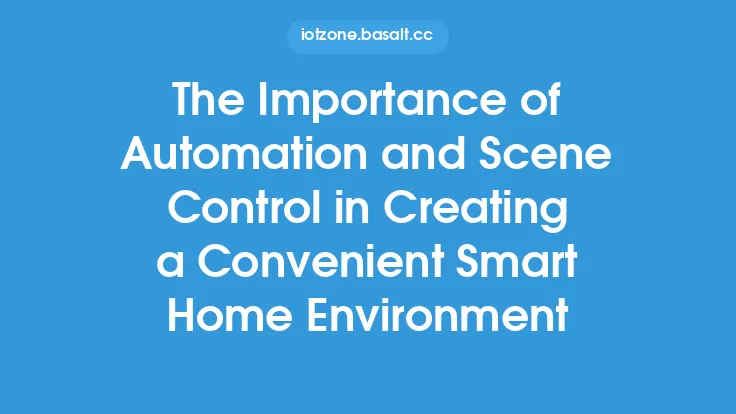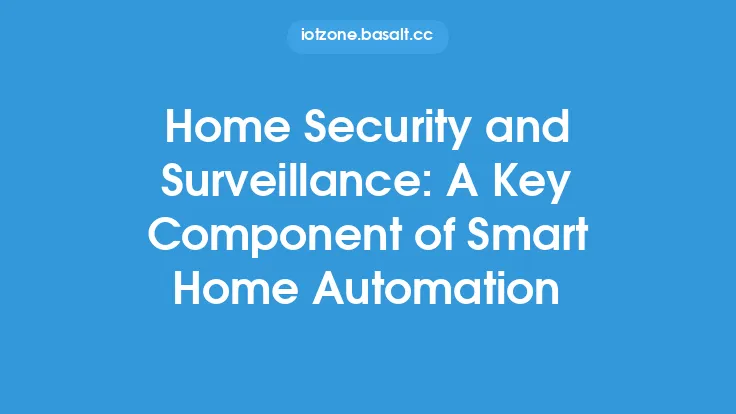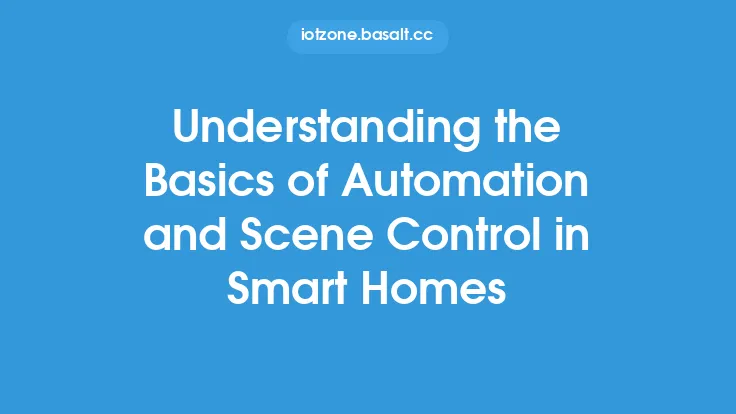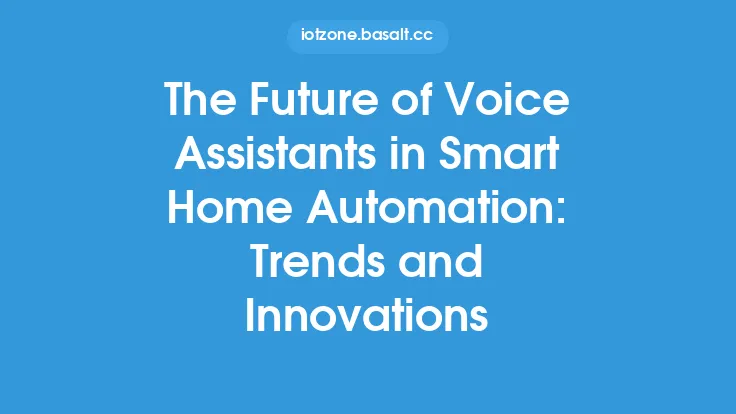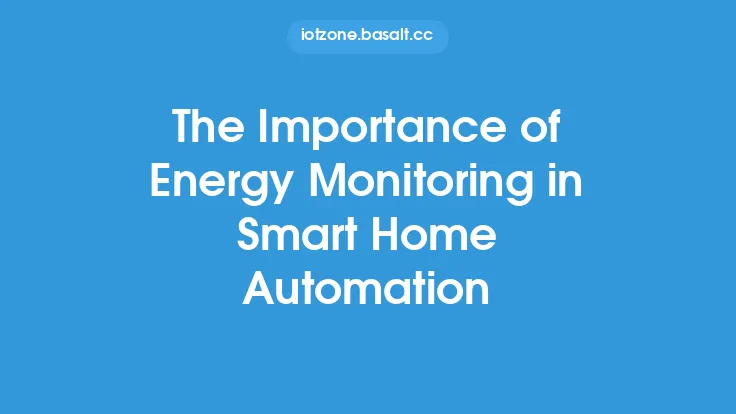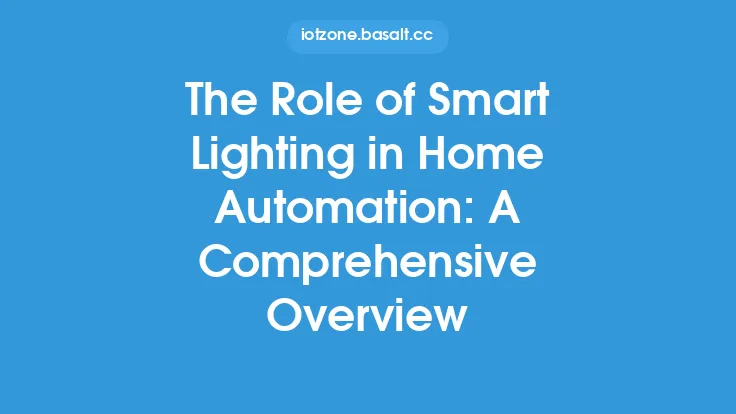The concept of home security and surveillance has undergone significant transformations in recent years, thanks to the advent of smart home automation. With the increasing number of connected devices and the internet of things (IoT), homeowners can now enjoy a higher level of security, convenience, and control over their properties. In this article, we will delve into the importance of home security and surveillance in smart home automation, exploring the various aspects, technologies, and benefits that make it an essential component of modern home security.
Introduction to Home Security and Surveillance
Home security and surveillance refer to the systems, devices, and protocols designed to protect a home and its occupants from potential threats, such as intruders, burglars, and other malicious activities. Traditional home security systems relied on simple alarm systems, motion detectors, and CCTV cameras. However, with the rise of smart home automation, home security and surveillance have become more sophisticated, incorporating advanced technologies like artificial intelligence, machine learning, and IoT connectivity.
Key Components of Home Security and Surveillance
A comprehensive home security and surveillance system typically consists of several key components, including:
- Sensors and Detectors: These devices detect and report potential security breaches, such as motion, door and window openings, and glass breakage.
- Cameras and Video Surveillance: IP cameras, CCTV cameras, and doorbell cameras provide visual monitoring and recording of the property.
- Alarm Systems: Sirens, strobe lights, and notification systems alert homeowners and authorities in case of a security breach.
- Access Control: Smart locks, biometric authentication, and secure entry systems control who can enter the property.
- Monitoring and Control: Centralized hubs, mobile apps, and voice assistants enable remote monitoring, control, and customization of the security system.
Technologies Used in Home Security and Surveillance
Several technologies play a crucial role in modern home security and surveillance systems, including:
- Wireless Communication Protocols: Wi-Fi, Bluetooth, Zigbee, and Z-Wave enable wireless connectivity between devices.
- Artificial Intelligence and Machine Learning: AI-powered systems can detect anomalies, recognize patterns, and predict potential security threats.
- Internet of Things (IoT): IoT connectivity allows devices to communicate with each other and the cloud, enabling remote monitoring and control.
- Cloud Computing: Cloud-based services provide secure data storage, processing, and analytics for home security and surveillance systems.
- Biometric Authentication: Facial recognition, fingerprint scanning, and voice recognition provide secure and convenient access control.
Benefits of Home Security and Surveillance in Smart Home Automation
The integration of home security and surveillance with smart home automation offers numerous benefits, including:
- Enhanced Security: Advanced technologies and real-time monitoring provide a higher level of security and protection for homeowners and their properties.
- Convenience and Control: Remote monitoring and control enable homeowners to stay connected to their property, receive notifications, and take action from anywhere.
- Energy Efficiency: Smart home automation can optimize energy consumption, reducing waste and saving costs.
- Increased Property Value: A comprehensive home security and surveillance system can increase property value and appeal to potential buyers.
- Peace of Mind: Homeowners can enjoy peace of mind, knowing that their property and loved ones are protected and secure.
Challenges and Limitations of Home Security and Surveillance
While home security and surveillance systems offer numerous benefits, there are also challenges and limitations to consider, including:
- Cybersecurity Risks: Connected devices and IoT connectivity introduce cybersecurity risks, such as hacking and data breaches.
- Interoperability Issues: Different devices and systems may not be compatible, leading to integration challenges and limitations.
- False Alarms and Notifications: Advanced systems can generate false alarms and notifications, leading to desensitization and decreased effectiveness.
- Cost and Complexity: Comprehensive home security and surveillance systems can be expensive and complex to install, maintain, and operate.
- Privacy Concerns: The use of cameras, microphones, and other sensors raises privacy concerns, particularly in sensitive areas like bedrooms and bathrooms.
Best Practices for Implementing Home Security and Surveillance
To ensure effective and secure home security and surveillance, homeowners should follow best practices, including:
- Conducting a Security Assessment: Identify potential vulnerabilities and threats to determine the most effective security measures.
- Selecting Compatible Devices: Choose devices and systems that are compatible and integrate seamlessly.
- Implementing Robust Cybersecurity: Use strong passwords, enable two-factor authentication, and keep software up-to-date to prevent cybersecurity breaches.
- Regularly Maintaining and Updating Systems: Perform regular maintenance, updates, and backups to ensure system effectiveness and security.
- Monitoring and Adjusting Settings: Continuously monitor and adjust system settings to optimize performance, reduce false alarms, and improve overall security.
Conclusion
Home security and surveillance are essential components of smart home automation, providing a higher level of security, convenience, and control for homeowners. By understanding the key components, technologies, and benefits of home security and surveillance, homeowners can make informed decisions when selecting and implementing a comprehensive system. While challenges and limitations exist, following best practices and staying informed about the latest technologies and trends can help mitigate these risks and ensure a secure and protected home. As smart home automation continues to evolve, the importance of home security and surveillance will only continue to grow, making it an essential aspect of modern home security.
